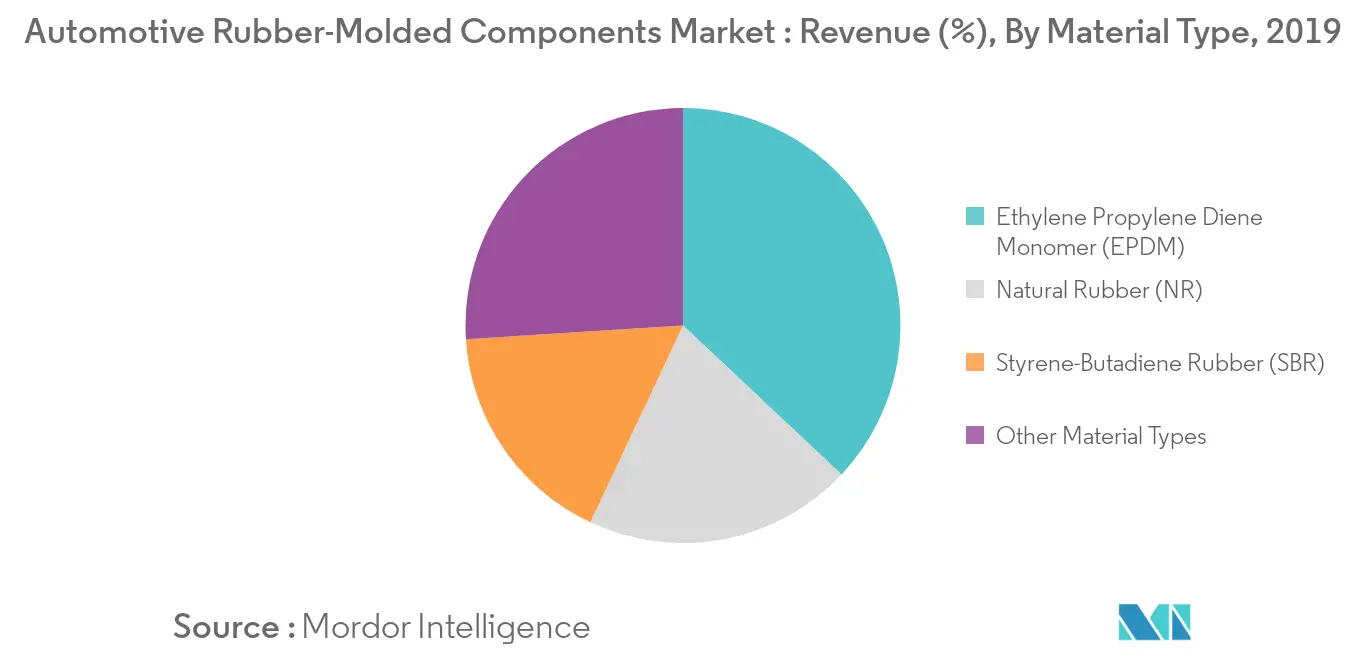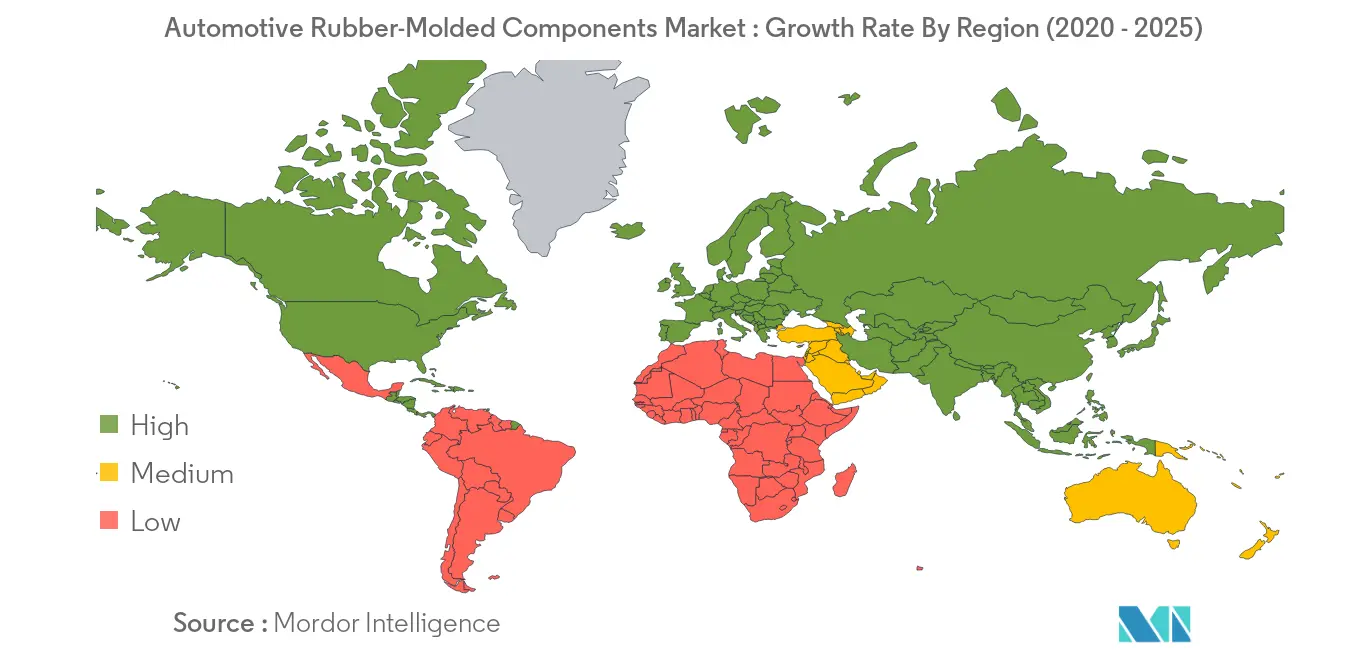Market Trends of Automotive Rubber Molded Components Industry
This section covers the major market trends shaping the Automotive Rubber Molded Components Market according to our research experts:
Ethylene Propylene Diene Monomer (EPDM) Segment To Exhibit A Significant Growth Rate During The Forecast Period
Ethylene propylene diene monomer (EPDM) is a type of synthetic rubber which has a lot of characteristics and features, such as weather resistance, vibration resistance, heat resistance, color stabilization, sealing property, tear resistance, durability, tensile strength (500 to 2500 PSI), etc. considered suitable for automotive applications. EPDM has a density of more than 2.00 g/cm3 and is the best for economical use. Lightweight materials like EPDM which lower pollution are a driving factor for the global automotive rubber-molded components market. The automotive industry is the largest customer for EPDM rubber. The need to reduce the vehicle weight to minimize vehicular emission is driving the growth of the market. The rising trend of electric vehicles and new energy vehicles is propelling the demand for EPDM rubber-molded components. EPDM has excellent electrical insulating properties. It has good resistance to ketones, ordinary diluted acids and alkalis, and excellent weather ability. It has excellent low temperature properties -60°F/-51°C and good high temperature resistance up to 350°F/177°C. The EPDM rubber is generally used for making weather seals and stripping, owing to its good adhesive characteristics with metal, wire and cable harness, window spacers, hydraulic brake systems, and seals for doors, windows, and trunks. The market for EPDM is expected to enjoy a healthy growth rate in the Asia-Pacific region, owing to the growth in electrification, stringent emission norms, growing demand for lightweight and commercial vehicles and availability of low-cost labor for automotive rubber component manufacturing in the region.

Asia-Pacific Is Leading The Market
China is one of the major producers of vehicles across the world. In 2019, China produced approximately 28% of the total vehicles in the world. At present, most of the vehicles produced in the country are IC engine vehicles. According to the China Association of Automobile Manufacturers, the total sales in the country fell by 8.2% in 2019 compared to the previous year. However, China's premium car market maintained stable growth in 2019. The luxury car market is concentrated and is dominated by Mercedes-Benz, Audi, and BMW. The Chinese manufacturers have accelerated the market development for hybrid and electric vehicles after the government's development plan that emphasized the need for new energy vehicles (electric, hybrid, and fuel-cell vehicles) in 2012. The Chinese government's policy on new energy to phase out all petrol and diesel cars. The country announced that by 2025, at least one-fifth of the vehicles on the roads would be electric-battery cars and plug-in hybrid cars. This will impact the market as the rubber molded components will phase out the application in electric vehicles used in IC engines.
The electric vehicle market in Japan has been experiencing growth. The demand for emission-free vehicles has been increasing, and the government has been investing heavily in this electric vehicle market. The Japanese government aims to transform all the new cars, sold in the country, to electric or hybrid vehicles, by 2050. The government has also set a target to reduce the emissions of carbon dioxide and other greenhouse gasses, by about 80% per vehicle, by 2050. This will impact the market as the rubber molded components have less application in electric vehicles as compared to IC engines.


